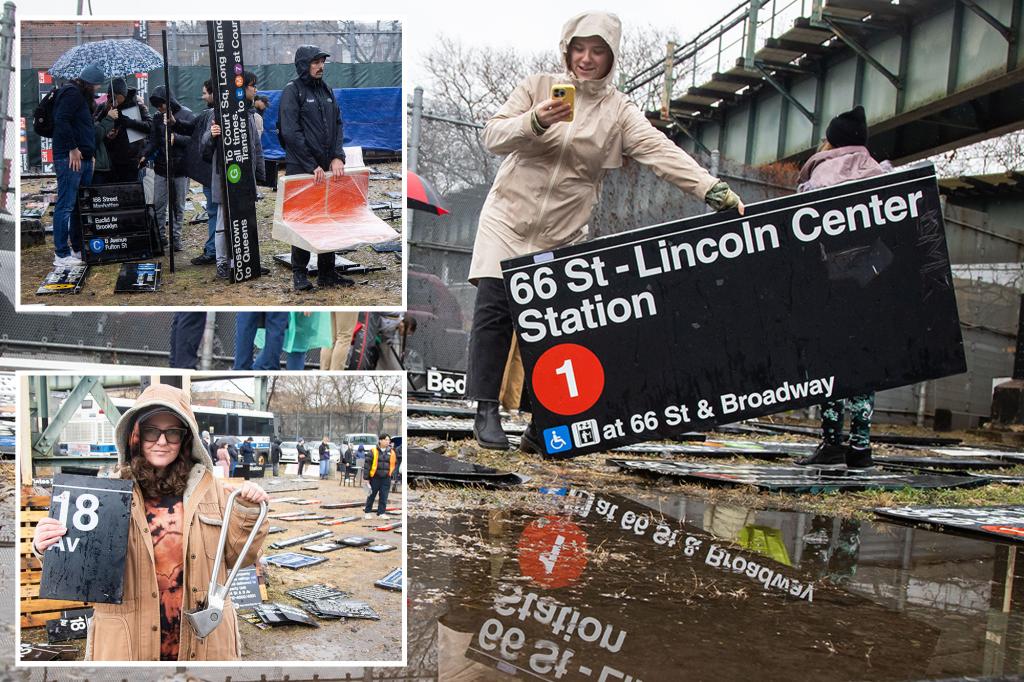The Metropolitan Transportation Authority (MTA) held its annual pop-up shop, transforming from a mover of people to a purveyor of peculiar memorabilia. The event, drawing a record crowd of nearly 700 enthusiastic shoppers, offered a unique opportunity to acquire a piece of New York City transit history. From weathered subway station signs and retired MetroCard machines to cockpit knobs, dials, and even trash bins, a treasure trove of transit artifacts awaited eager buyers. This year’s sale proved to be the most popular yet, eclipsing previous years’ attendance, as evidenced by the long lines and bustling atmosphere. The event served as a testament to the enduring fascination with the city’s iconic transit system and the desire to own a tangible connection to its rich history.
The diverse crowd gathered at the MTA’s pop-up shop included nostalgic New Yorkers, avid collectors, and those searching for unique gifts. Among them was Diedre Plummer, a nurse preparing to relocate to North Carolina, seeking a memento of her beloved city. She found the perfect keepsake in a red “customer assistance intercom” sign, a vibrant reminder of her time in the Big Apple. John DiMarco, a retired NYPD officer, discovered a transit police sign that resonated deeply with his personal history, evoking memories of his time working alongside Mayor Adams in the Transit Bureau. The sale offered a chance to connect with the past, preserving personal memories and celebrating the city’s unique character.
The hunt for unique and meaningful gifts was a driving force for many attendees. Christian O., a young Brooklynite, braved the long lines in search of a coveted Yankees Stadium sign, a perfect Christmas present for his collector uncle. The desire to surprise loved ones with a piece of New York City’s transit lore fueled the competitive spirit of the event, highlighting the sentimental value attached to these seemingly mundane objects. The diverse range of items available, from station signs to train components, catered to a wide array of interests and budgets, ensuring that every attendee could potentially find a treasure to cherish.
Despite the excitement and anticipation surrounding the sale, not everyone was fortunate enough to secure their desired items. As closing time approached, over 300 disappointed shoppers were turned away, their hopes dashed by the overwhelming demand. Among them was Brian Castro, a former New Yorker now residing in San Francisco, who had hoped to bring a piece of his former home back to the West Coast. The limited availability of items and the sheer volume of attendees created a sense of urgency and competition, leaving some empty-handed but determined to try their luck again the following year.
Prior to the public sale, private appointments allowed a select few to acquire some of the most sought-after items, including antique porcelain Times Square and 42nd Street signs, which commanded a hefty price tag of $2,500 each. These exclusive previews catered to serious collectors and those willing to invest in rare and historically significant pieces. The proceeds from the entire sale, including both the private appointments and the public event, contribute directly to the MTA’s general operating budget, offering a small but welcome contribution to the agency’s financial needs.
While the influx of funds from the pop-up shop is appreciated, some attendees expressed skepticism about its impact on the MTA’s substantial financial challenges. Nick Arroyo, a mechanical engineer who purchased a gift for his out-of-state sibling, questioned whether the revenue generated would significantly offset the agency’s massive deficit. He pointed to what he perceived as wasteful spending, such as the million-dollar surveys aimed at understanding fare evasion, as evidence of the MTA’s financial mismanagement. Despite the positive sentiment surrounding the sale and its contribution to the operating budget, concerns about the agency’s overall financial health and spending priorities remained prevalent among attendees.

